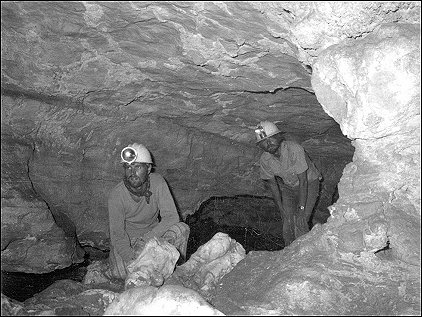

Has anyone ever suggested you explore a cave? Many people, known as "spelunkers", do just this! Of course, caves can be frightening places for some people, but they can be ideal habitats for many animals.
Take Carlsbad Caverns, in southeastern New Mexico. Most people know that millions of bats live there—at least for part of the year. But you may not realize that caves are home to a myriad of animal species, including crickets, Ringtails, and owls. Yes, it's dark, but animals have developed various strategies to deal with the darkness. However, the temperature and humidity are constant. Whether it's 115 or 10 below, Carlsbad Caverns remains a stable 56 degrees. The caverns are moist, and water is always at a premium in the desert.
So although many animals don't spend all their time in a cave, they
may use it as a base and venture out only to forage for food—or they may just
come in when they need some water or a place to cool off.

Listen to the Audio (mp3 format) as recorded by KTEP, Public Radio for the Southwest.
Contributor: Kodi R. Jeffery, Centennial Museum, University of Texas at El Paso.
Desert Diary is a joint production of the Centennial Museum and KTEP National Public Radio at the University of Texas at El Paso.

Bob and Rick Smartt, Dry Cave Expedition, 25 June 1970. Photograph by Arthur H. Harris.
Moore, G. W., and N. Sullivan. 1997. Speleology: Caves and the cave environment. 3rd ed., Cave Books, St. Louis.